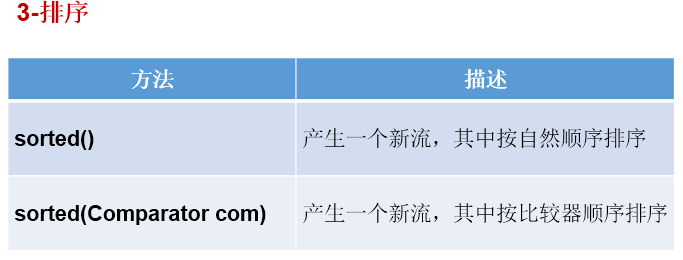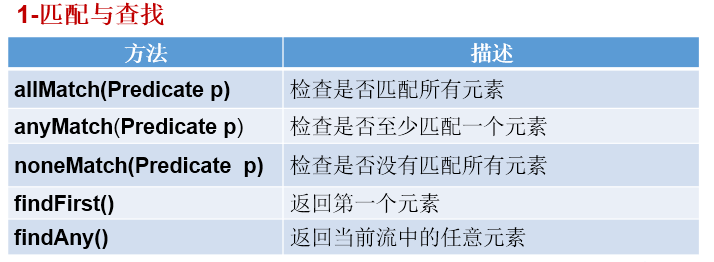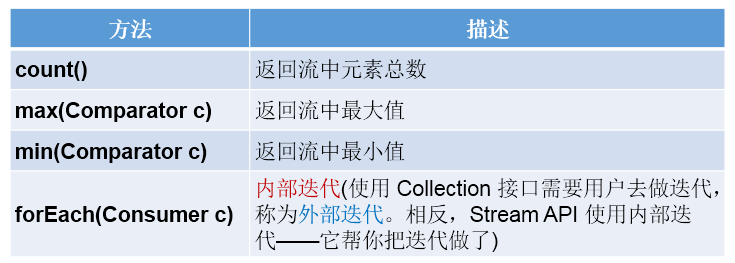1.Stream API的理解
Stream 关注的是对数据的运算,与CPU 打交道
集合 关注的是数据的存储,与内存 打交道
java8提供了一套api,使用这套api可以对内存中的数据进行过滤、排序、映射、归约等操作。类似于sql对数据库中表的相关操作。
2.注意点
①Stream 自己不会存储元素。
②Stream 不会改变源对象。相反,他们会返回一个持有结果的新Stream。
③Stream 操作是延迟执行的。这意味着他们会等到需要结果的时候才执行。(未执行终止操作前,中间的操作都不执行;执行终止操作时,前面的操作才一起执行)
3.Stream的使用流程
① Stream的实例化
② 一系列的中间操作(过滤、映射、…)
③ 终止操作
4.使用流程的注意点:
一个中间操作链,对数据源的数据进行处理
一旦执行终止操作,就执行中间操作链,并产生结果。之后,不会再被使用(故,如果后面还需使用stream,需要重新生成)
5.步骤一:Stream实例化 1 2 3 4 5 6 7 8 9 10 11 12 13 14 15 16 17 18 19 20 21 22 23 24 25 26 27 28 29 30 31 32 33 34 35 36 37 38 39 40 41 42 43 44 45 46 47 48 49 @Test public void test1 () { List<Employee> employees = EmployeeData.getEmployees(); Stream<Employee> stream = employees.stream(); Stream<Employee> parallelStream = employees.parallelStream(); } @Test public void test2 () { int [] arr = new int []{1 ,2 ,3 ,4 ,5 ,6 }; IntStream stream = Arrays.stream(arr); Employee e1 = new Employee (1001 ,"Tom" ); Employee e2 = new Employee (1002 ,"Jerry" ); Employee[] arr1 = new Employee []{e1,e2}; Stream<Employee> stream1 = Arrays.stream(arr1); } @Test public void test3 () { Stream<Integer> stream = Stream.of(1 , 2 , 3 , 4 , 5 , 6 ); } @Test public void test4 () { Stream.iterate(0 , t -> t + 2 ).limit(10 ).forEach(System.out::println); Stream.generate(Math::random).limit(10 ).forEach(System.out::println); }
6.步骤二:中间操作
7.步骤三:终止操作
Collector需要使用Collectors提供实例。












